The great estates of Scotland sold last year, from castles and islands to vast swathes of highlands
Penny Churchill takes a look at the thriving market for Scotland's vast estates.


One of few large Scottish estates seen on the open market in 2022, the illustrious, 1,528-acre Careston residential and farming estate near Brechin, Angus, reflected the changing face of the Scottish land market. Its sale saw the Category A-listed castle with 345 acres of land acquired by a European buyer, the bulk of the remaining farmland being purchased by expanding commercial farmers or those with rollover funds burning holes in their pockets.
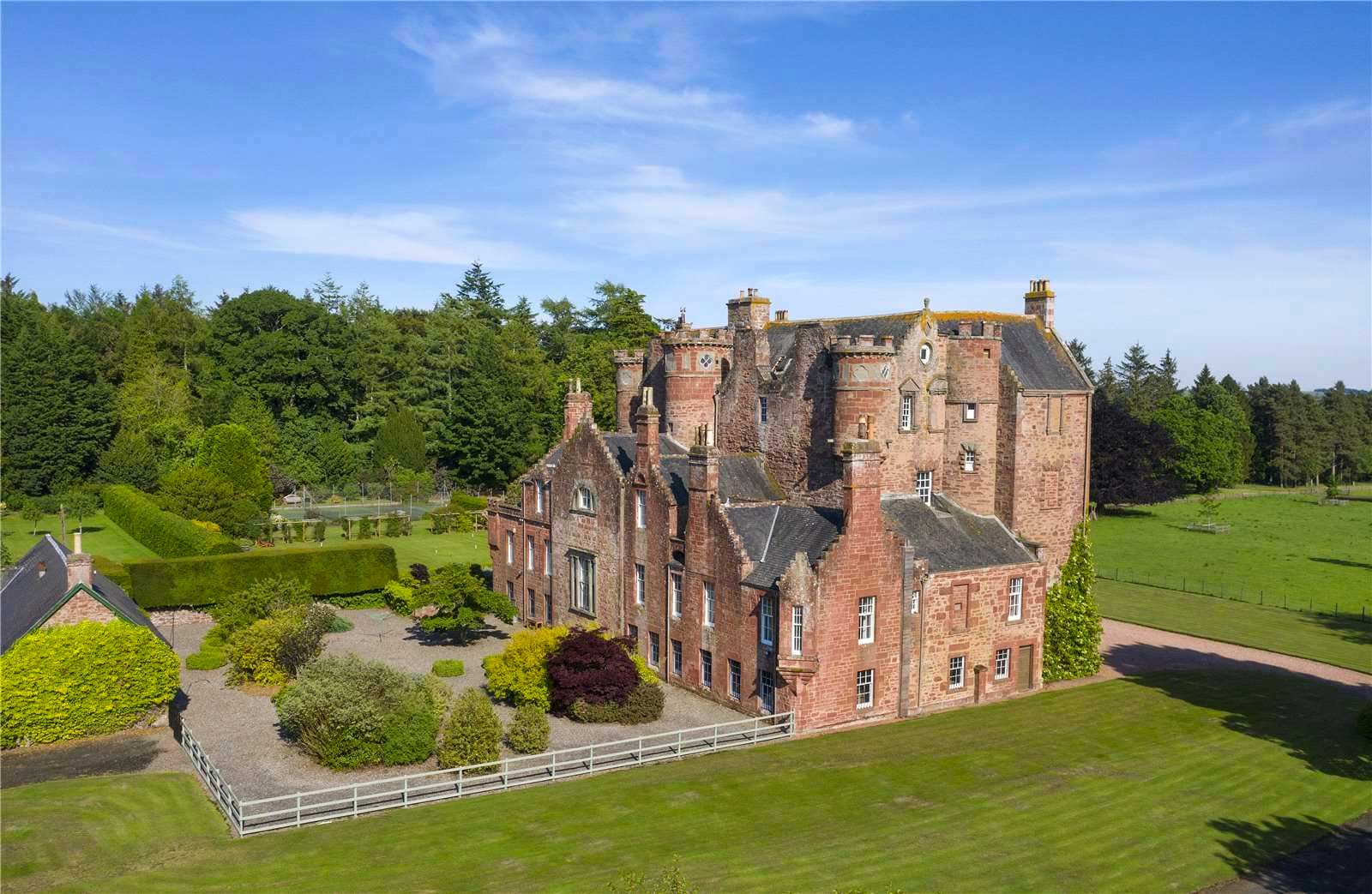
Launched onto the market by Savills in autumn 2021 at a guide price of £11.3 million for the whole—or in eight lots—the sale of the Careston estate marked the end of an era for the Adamson family, whose home it had been for 150 years. Described by the writer Ochterlony in 1682 as ‘without debait the best gentleman’s house in the shyre’, Careston Castle was built in the late 16th century by Sir Henry Lindsay, later 13th Earl of Crawford, and revamped by his nephew, Lord Spynie, in the 1620s.
By 1721, the castle was owned by Maj George Skene and passed down through his family to his great-granddaughter, who married Alexander, 3rd Earl of Fife. An article in Country Life on March 1, 1913 notes the addition of a grand staircase hall at the rear, and the embellishment of the 16th-century turrets with crenellations in the Gothic style. Further additions were made for John Adamson, the son of a Dundee whaling captain and owner of the Erichtside linen works at Blairgowrie, who bought Careston from the Earl of Fife in 1872.
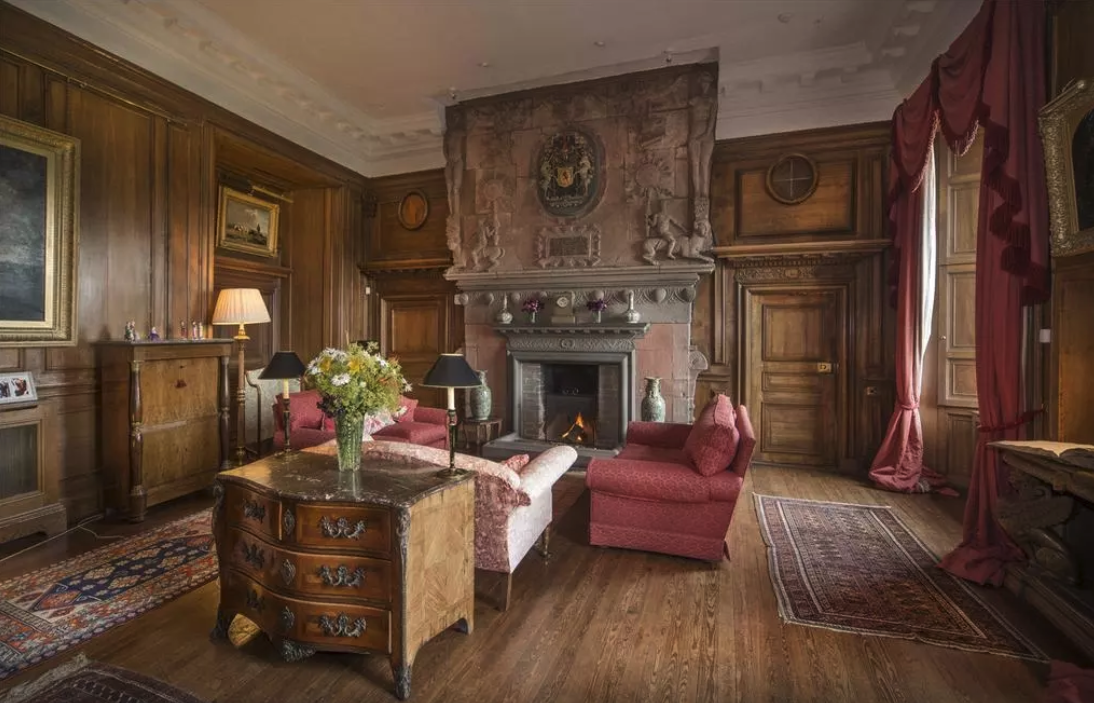
Evelyn Channing of Savills, who heads up the firm’s farms and estates operations north of the Border, reports a significant increase both in the number of estates offered for sale (27 in 2022, compared with 22 in 2021) and the total acreage marketed (246,496 acres in 2022, compared with 88,160 acres in 2021). She estimates the total value of the estates offered at £347.05m based on asking price, although most were offered privately, with no online listing and no advertising. She also reveals that 69% of sales was to an active pool of committed ‘natural-capital buyers’, the majority of whom were UK-based.
Among the estates sold by Savills to natural-capital and conservation buyers was the 11,000-acre Invergeldie estate in Perthshire, where a pre-emptive offer from the recently founded Oxygen Conservation, based in Exeter, was accepted within three weeks of launch. Currently under offer to conservation buyers are the 11,500-acre Blackburn and Hartsgarth estate in Dumfriesshire and the 18,000-acre Dalnacardoch estate in Perthshire.
"The wave of enthusiasm for investment in ‘natural capital’ has sent values soaring"
Even the Scottish Government climbed on the natural-capital bandwagon, funding the purchase by Forestry and Land Scotland of the 16,500-acre Glenprosen estate in the Angus Glens, for £17.6m. A significant part of the estate will now be planted for forestry, in pursuit of the Government’s stated aim of ‘managing these resources in such a way as to maximise environmental, biodiversity and community benefits while also increasing our net contribution to Scotland’s climate emergency mitigation effort’.
The current wave of enthusiasm for investment in ‘natural capital’, defined in simple terms by Rob McCulloch of Strutt & Parker as ‘the capitalisation of the natural environment’, has sent the value of hill-grazings or bare land soaring in the past two years, from less than £200 an acre to £2,000 an acre in some cases.
Sign up for the Country Life Newsletter
Exquisite houses, the beauty of Nature, and how to get the most from your life, straight to your inbox.
As a prime target for natural-capital buyers, he cites the example of the remote, 3,380-acre Tayvallich estate, near Lochgilphead, Argyll, a spectacular mixed-use coastal estate that occupies a little-known, but picturesque and ecologically important peninsula between the Sound of Jura and Knapdale peninsula on Scotland’s west coast.
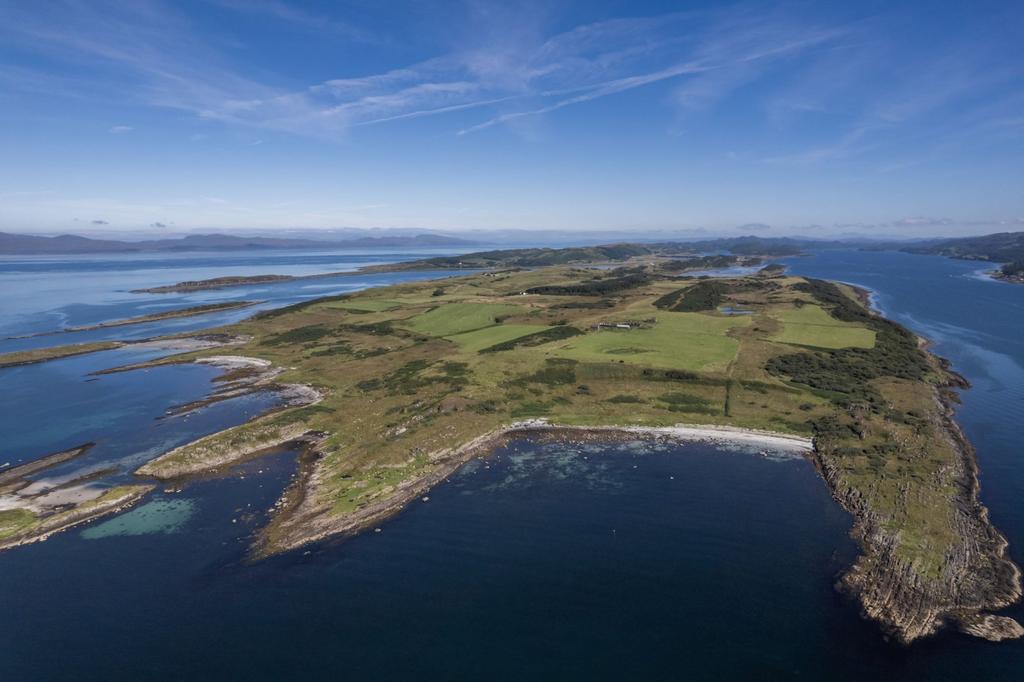
Launched on the market through Strutt & Parker in September 2022 with a guide price of £10.465m for the whole, or in 13 lots, Tayvallich ranges from the 1,686-acre Drimnagall farming estate to a number of native woodland sites, plus various houses and buildings, to the scenic, 811-acre Danna Island, comprising a boathouse, jetties, redundant buildings, houses, five small islands and more than five miles of coastline.
By mid November, Tayvallich was under offer to Highlands Rewilding, the latest in a series of environmental and social-purpose enterprises founded by the writer and climate campaigner Jeremy Leggett, which already owns the Bunloit estate on the banks of Loch Ness and the Beldorney estate in the Highlands.
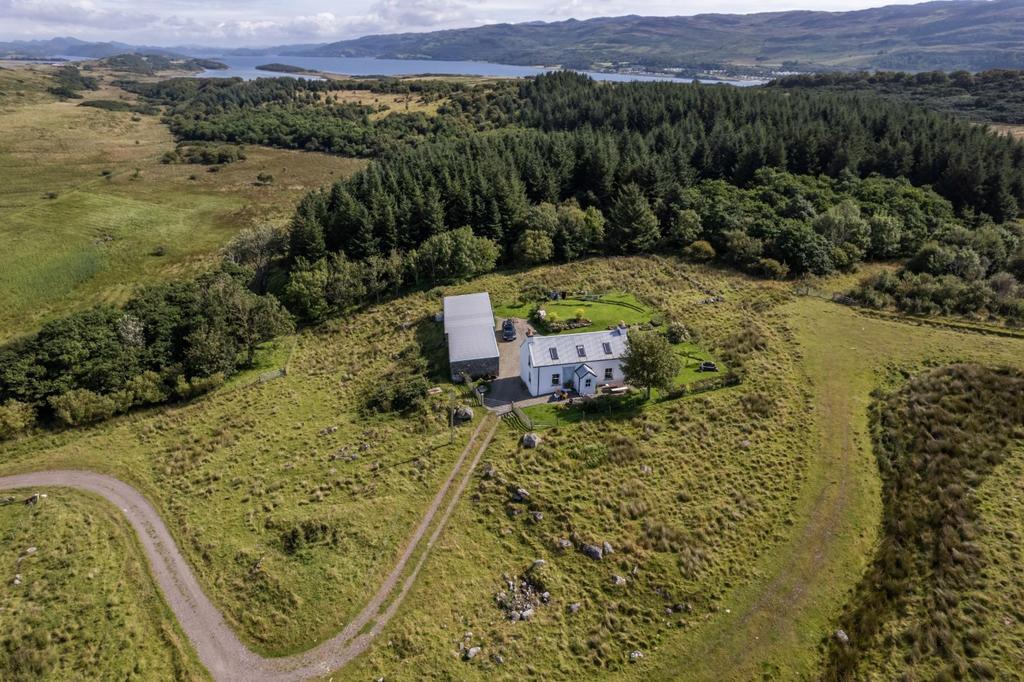
According to Mr Leggett’s Wikipedia entry, ‘the goals of the project are to increase the carbon sequestration and biodiversity of the land, to create sustainable nature-based employment in a rural version of the Green New Deal, and to generate sustainable and ethical profits to demonstrate a viable new way of land management’.
In the brave new world of natural capital, large estates are increasingly sought after by buyers looking for sizeable projects to deliver meaningful long-term outcomes. This was the case with the 9,941-acre Pennyghael estate (pictured top), an outstanding mixed coastal, residential, sporting and amenity estate on the Isle of Mull, the second largest island of the Inner Hebrides.
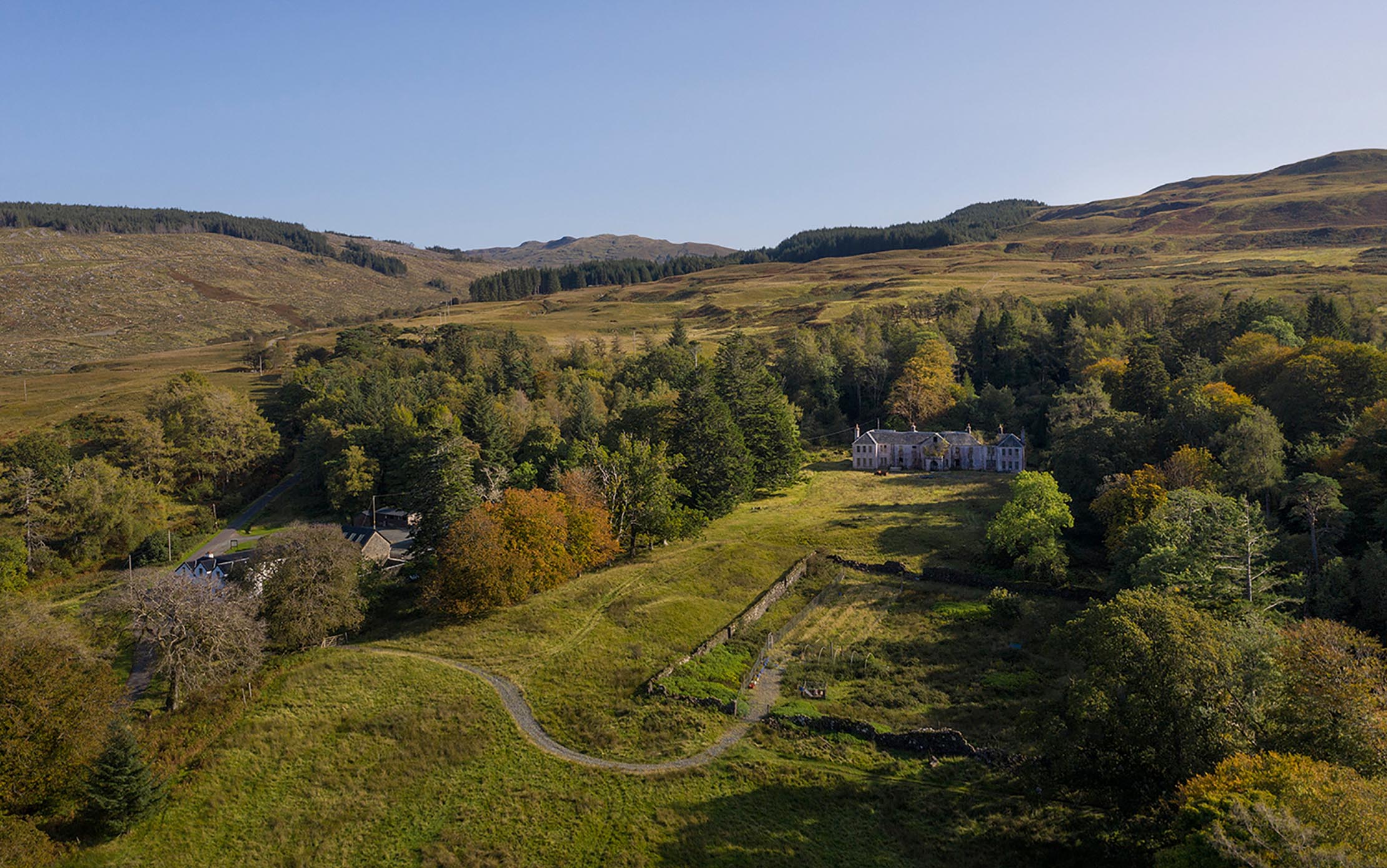
Once owned by the pop group Genesis, it came to the market through Knight Frank with a guide of ‘offers over £5m’, and sold privately to an environmental buyer who was drawn to Pennyghael by the potentially valuable carbon-capture opportunities of its substantial acreages of commercial and native woodland, rather than its established sporting credentials.
Although natural capital hit the headlines in 2022, traditional sporting and lifestyle buyers were still very much in evidence, says Tom Stewart-Moore of Knight Frank, who also handled the sale of what was probably the smallest ‘estate’ sold in Scotland last year.
This was The White House of Aros, a secluded 44-acre coastal estate on the east coast of Mull that boasts panoramic views across the Sound of Mull to the Movern and Ardnamurchan peninsulas. The White House of Aros was once part of the Aros Castle estate, owned successively by the MacDougalls, the Macdonalds, the Macleans of Duart and the Campbells, before the castle fell into disuse—it remains a romantic landmark overlooking Salen Bay.
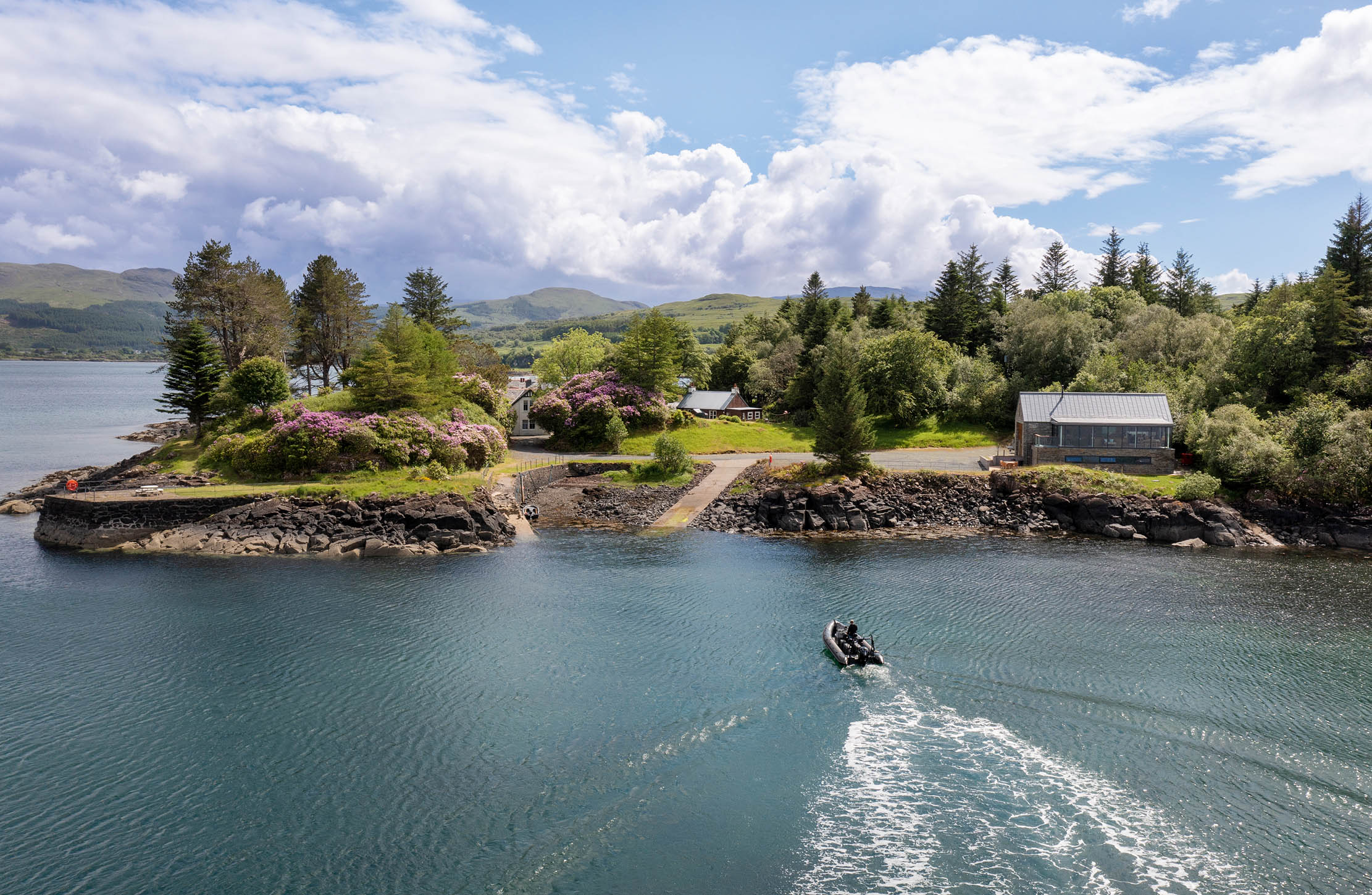
The present estate, comprising the seven-bedroom White House, its three-bedroom gardener’s cottage, the newly-built Riverside House and the contemporary boathouse and cottage, together with 44 acres of pasture, woodland, roads and buildings, was launched on the open market in July 2022 with a guide of ‘offers over £2.9m’ and sold to a UK buyer in the face of competition from overseas.

Credit: Strutt and Parker
Best country houses for sale this week
An irresistible West Country cottage and a magnificent Cumbrian country house make our pick of the finest country houses for
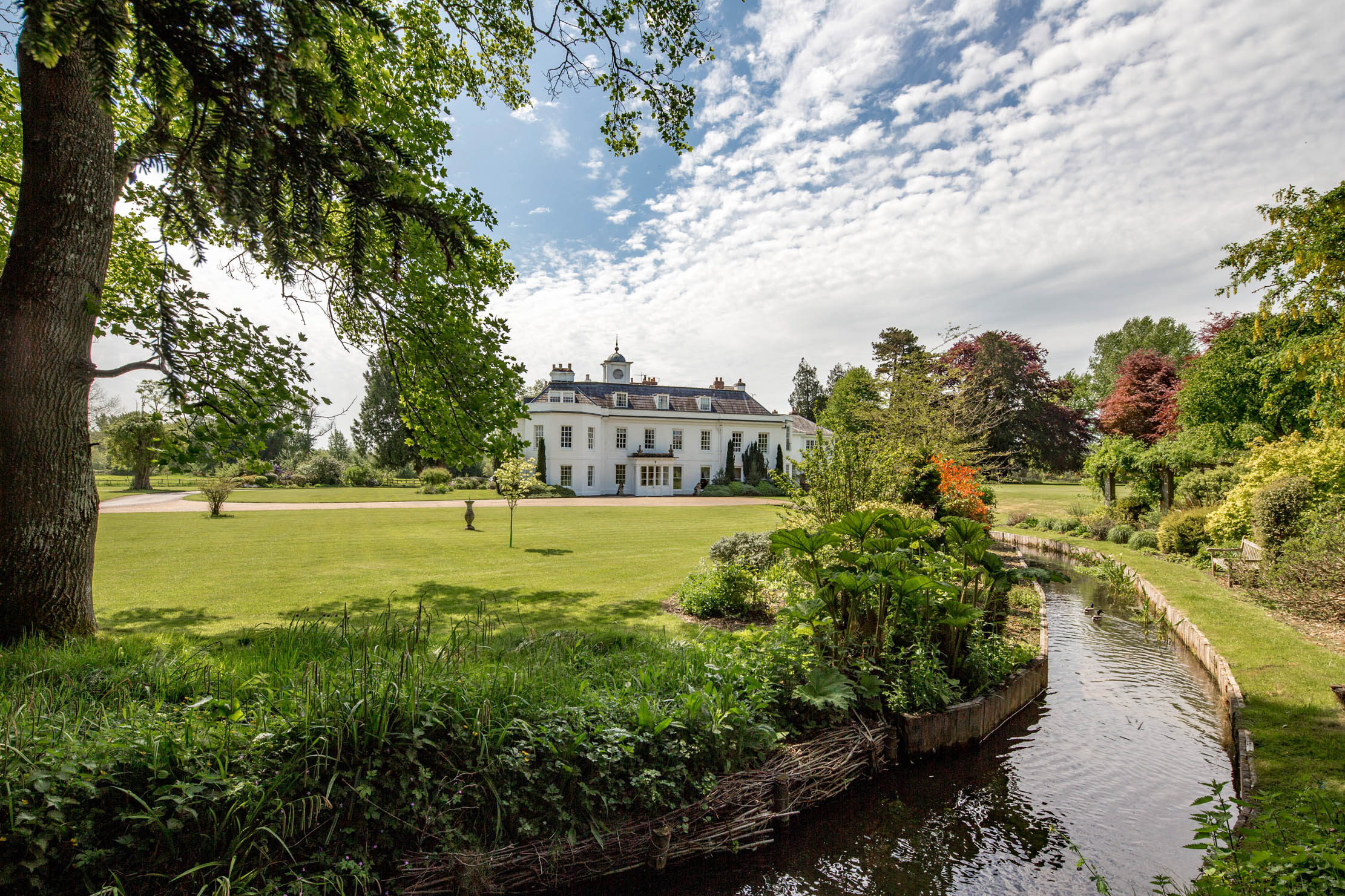
The biggest country house sales of 2022, from the house built by Lutyens for Jekyll to a dream home that 'could have sold six times over'
Despite lashings of insecurity, both political and economic, the prime country-house market still managed to have a year to remember,
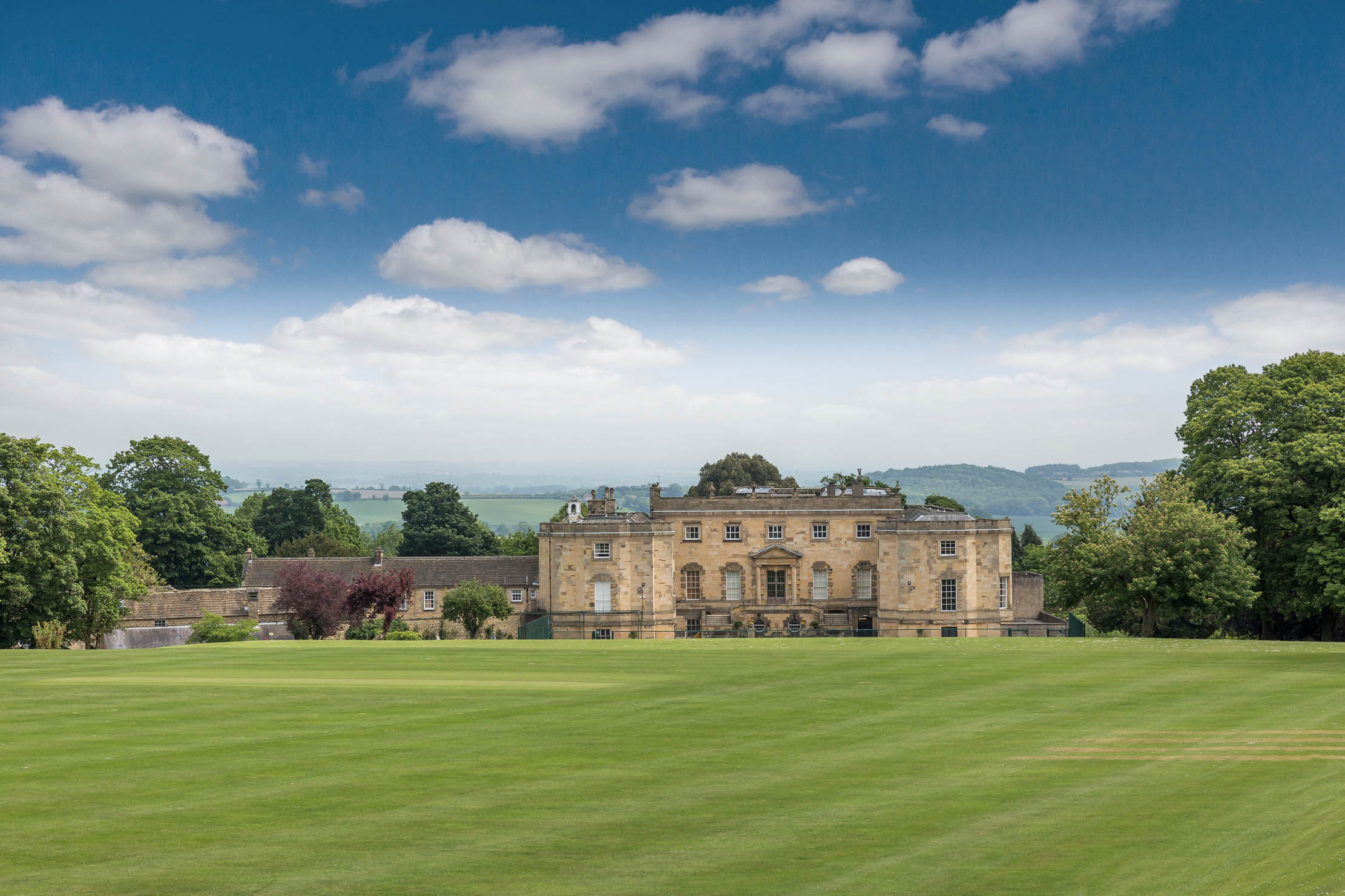
The top country estates that sold in Britain in 2022, from £3.5 million to over £50 million
Penny Churchill takes a look at the biggest estate sales of the year, with a shortfall in supply helping to
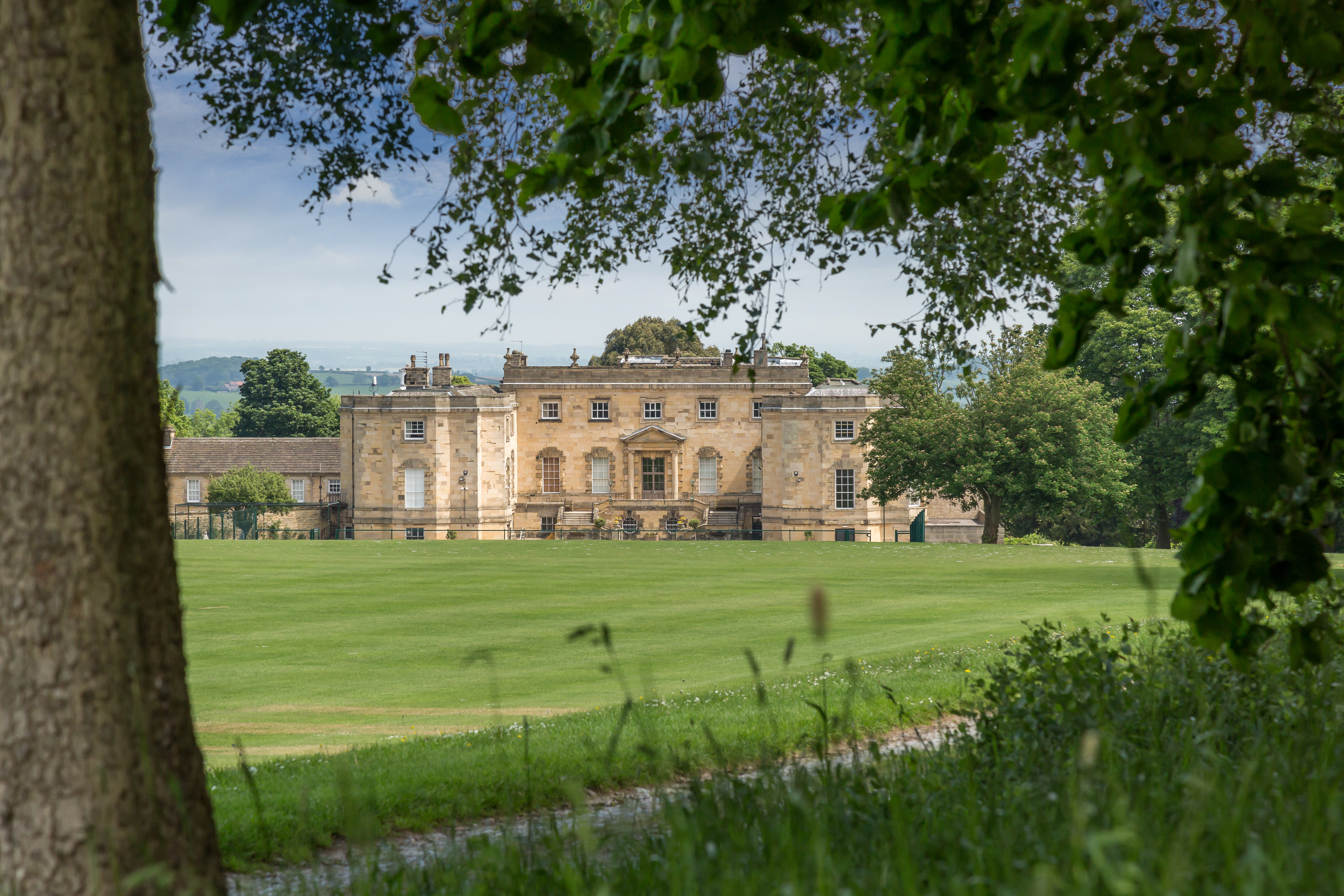
Country Life's top 10 property stories of 2022
From castles and cottages to manor houses and an entire peninsula of a Scottish island, enjoy our list of the
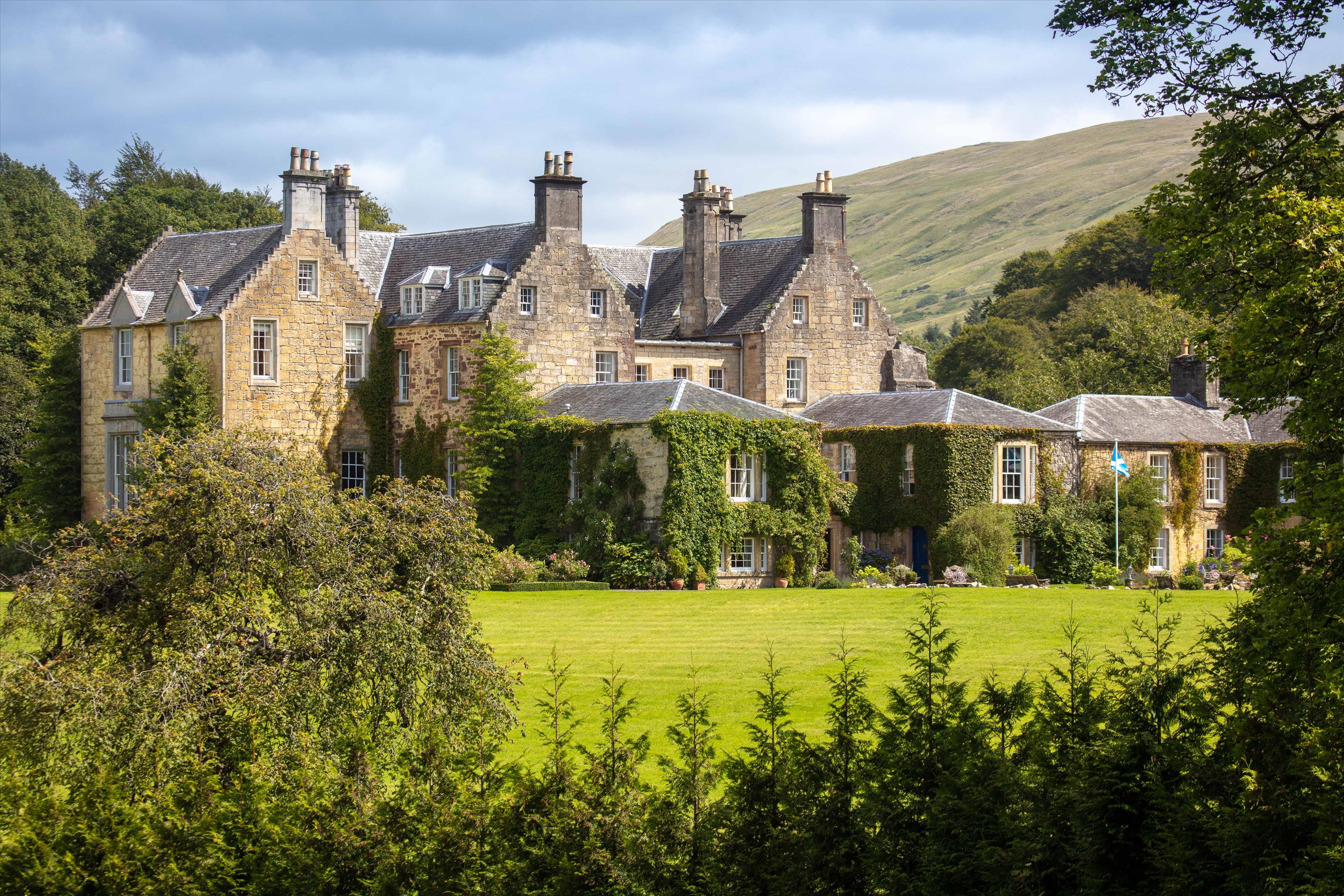
Spectacular Scottish castles and estates for sale
A look at the finest castles, country houses and estates for sale in Scotland today.
-
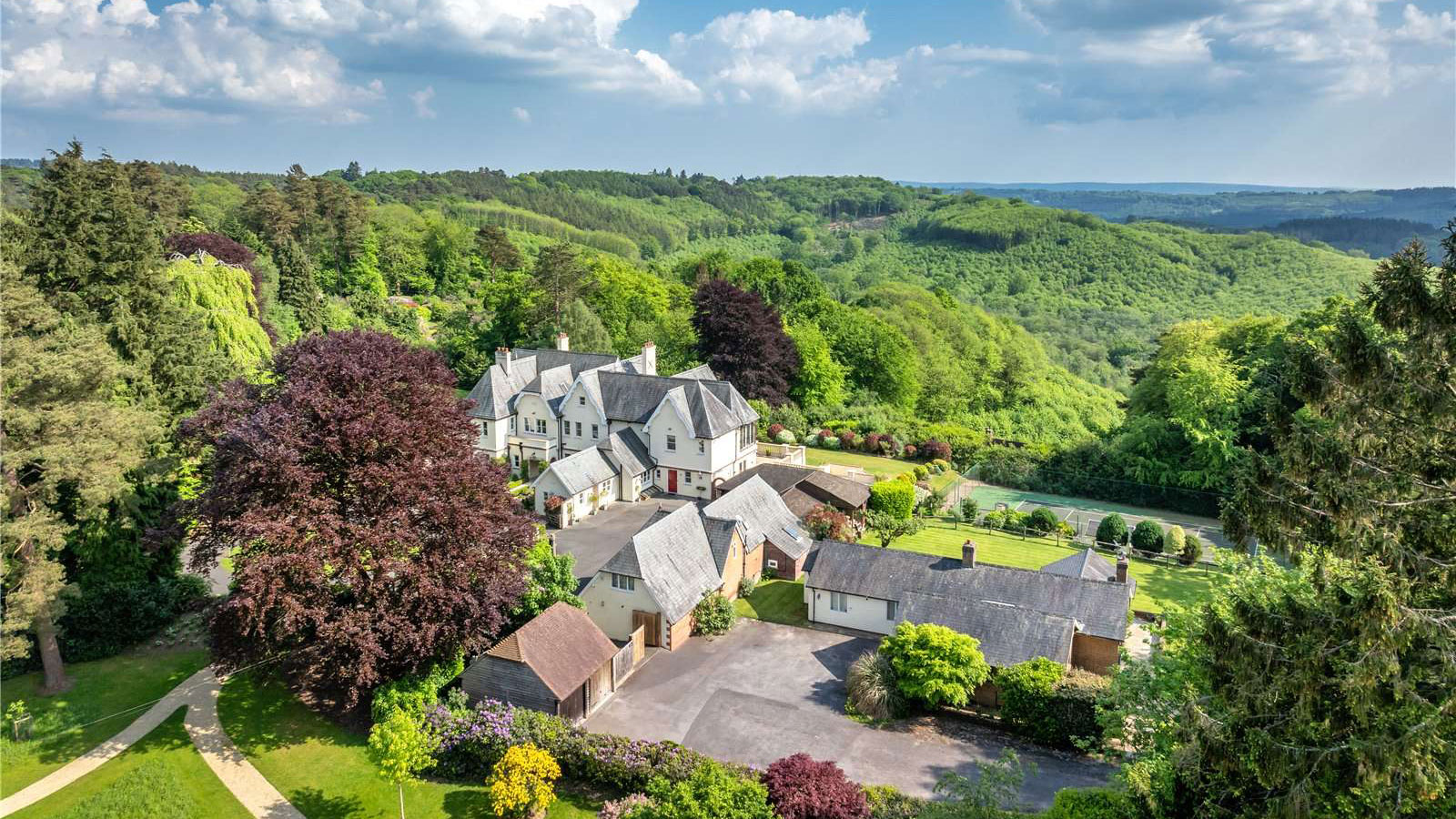 Six rural properties with space, charm and endless views, as seen in Country Life
Six rural properties with space, charm and endless views, as seen in Country LifeWe take a look at some of the best houses to come to the market via Country Life in the past week.
By Toby Keel Published
-
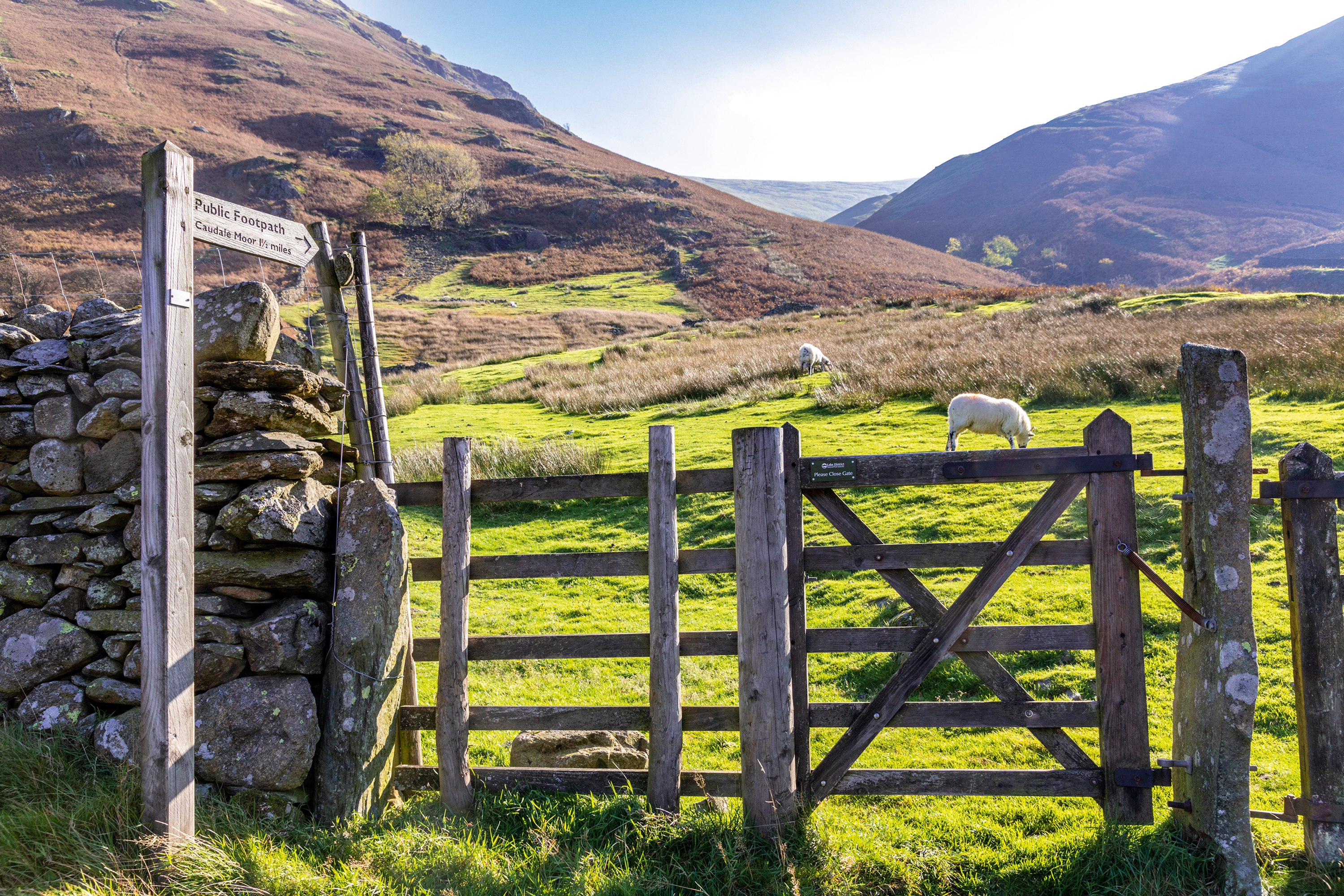 Exploring the countryside is essential for our wellbeing, but Right to Roam is going backwards
Exploring the countryside is essential for our wellbeing, but Right to Roam is going backwardsCampaigners in England often point to Scotland as an example of how brilliantly Right to Roam works, but it's not all it's cracked up to be, says Patrick Galbraith.
By Patrick Galbraith Published
